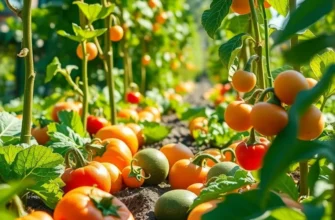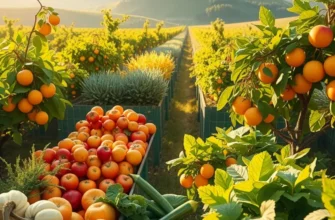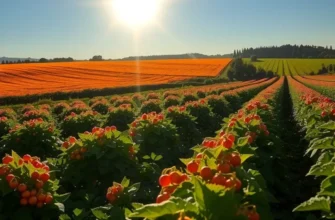From hearty meats and delicious sausages to delicate pastries and savory breads, German food culture is a tapestry of flavors and traditions. Each region boasts its own specialties, reflecting the history, geography, and seasonal produce unique to that area. Whether you are a food enthusiast or simply curious about global culinary practices, immersing yourself in Germany’s food culture reveals the heart of its people and their rich traditions. Join us as we discover the unique ingredients and dishes that make German cuisine a beloved culinary adventure.
The Regional Palette: Diverse Flavors of Germany

Every corner of Germany provides unique culinary experiences, showcasing its regions’ varied landscapes and cultural heritage. Bavaria, in the south, is known for its lush forests and robust culinary traditions. A staple dish is the Bavarian pretzel, typically enjoyed with sausages and a side of sauerkraut. The natural sourness of sauerkraut complements the salty pretzel and savory sausage, embodying the iconic flavor profile of southern Germany.
Moving north to the seaside, you encounter the coastal frugality of Hamburg. This city serves up Fischbrötchen, a sandwich of fresh fish nestled in a crunchy roll. The fish, often herring or plaice, is caught daily from the North Sea, reminding diners of Hamburg’s maritime roots.
In the east, Saxony offers a taste of its rich culinary history with Leipziger Allerlei. This vegetable medley, traditionally made with morels, crayfish tails, and tender spring vegetables, reflects the region’s affinity for both local agriculture and forest gifts.
Berlin stands as a melting pot of flavors, where traditional German dishes meet international influences. The Currywurst, a street food beloved by locals and tourists alike, exemplifies this blend. Perfectly grilled sausages are served with curry-spiced ketchup, adding a dash of exotic flavor to a German classic.
Westward, you find the Rhineland, celebrated for its wine and effervescent dishes. The sweet and savory combination found in Sauerbraten, a pot roast marinated in a mix of vinegar and spices, highlights the balance of flavors favored in this region.
The southwest region of Swabia is famous for its Spätzle, a soft egg noodle considered comfort food for many Germans. Often served with cheese or as a side to meats, Spätzle demonstrates the German knack for hearty, satisfying meals.
While every region contributes distinct tastes, each dish reflects a broader tradition of efficiency and practicality. Regions capitalize on local produce and seasonality, turning simple ingredients into meals that are both delicious and sustainable. This philosophy can resonate with modern movements towards low-waste cooking practices as explored in Safer Storage of Sauces.
Germany’s regional cuisine forms an intricate tapestry, woven from centuries of cultural interactions and natural abundance. Each dish carries stories and traditions, offering an authentic window into the German way of life.
Festivals and Traditions: Food as a Cultural Expression

Germany’s vibrant festivals offer a unique glimpse into its rich culinary traditions, where food takes center stage as a cultural expression. These celebrations, deeply rooted in history, showcase not only Germany’s culinary diversity but also its strong sense of community and tradition.
In Bavaria, Oktoberfest is an iconic celebration known worldwide. Originally established in 1810, this festival invites millions to revel in hearty Bavarian delicacies alongside mugs of beer served in lively tents. The aroma of freshly baked pretzels, paired with the delights of weisswurst, draws in locals and tourists alike. Traditional oompah bands provide a merry backdrop as friends and strangers bond over shared tables, highlighting the communal spirit of German gatherings.
As the year advances, Germany’s Christmas markets transform cities into winter wonderlands, where food plays a comforting role. Fragrant stands brimming with roasted chestnuts line cobbled streets, while the sweet scent of lebkuchen, a gingerbread cookie rich in spices, fills the air. Families and friends often gather around warm cups of mulled wine, known locally as Glühwein, savoring each other’s company amidst twinkling lights and festive music.
Beyond these popular festivities, Germany hosts a number of regional celebrations that honor agricultural cycles and seasonal harvests. In autumn, the wine festivals of Rhineland-Palatinate highlight the region’s viticultural heritage. Local wines pair elegantly with freshly picked grapes and regional specialties, such as flammkuchen, a crispy flatbread topped with onions and bacon.
Family gatherings throughout the country often revolve around shared meals, reflecting the significant role food plays in celebrating life’s milestones. From weddings to christenings, tables overflow with a variety of meat-based dishes like roast pork or beef roulades, accompanied by seasonal vegetables and creamy sauces. Desserts, such as black forest cake, offer a sweet end to these rich meals.
Religious celebrations also feature ceremonial meals that bind communities. Easter breakfasts feature eggs dyed in vibrant colors, a symbol of rebirth and renewal. Christmas Eve’s celebratory feast often includes carp and is a time to pause and reflect on the blessings of the year.
Embedded within these traditions is a sense of sustainability, valuing local and seasonal produce to minimize waste and maximize flavor. For those keen on adopting eco-friendly habits in their kitchen, exploring sustainable storage solutions can be a good start.
Festivals in Germany are not only about indulging in culinary delights but also about celebrating togetherness and cultural identity. Through food, these traditions continue to weave a rich tapestry of community spirit, connecting past and present in an ever-changing cultural landscape.
Final words
Germany’s diverse food culture serves as a delicious reminder of the country’s rich history and vibrant regional identities. Each bite tells a story, from traditional recipes passed down through generations to modern culinary innovations that honor time-honored practices. Exploring German cuisine not only satisfies the palate but also provides insights into the social fabric that binds communities together. As you embark on your culinary exploration, remember that food is more than just sustenance; it is a bridge that connects us to one another and to our heritage.








